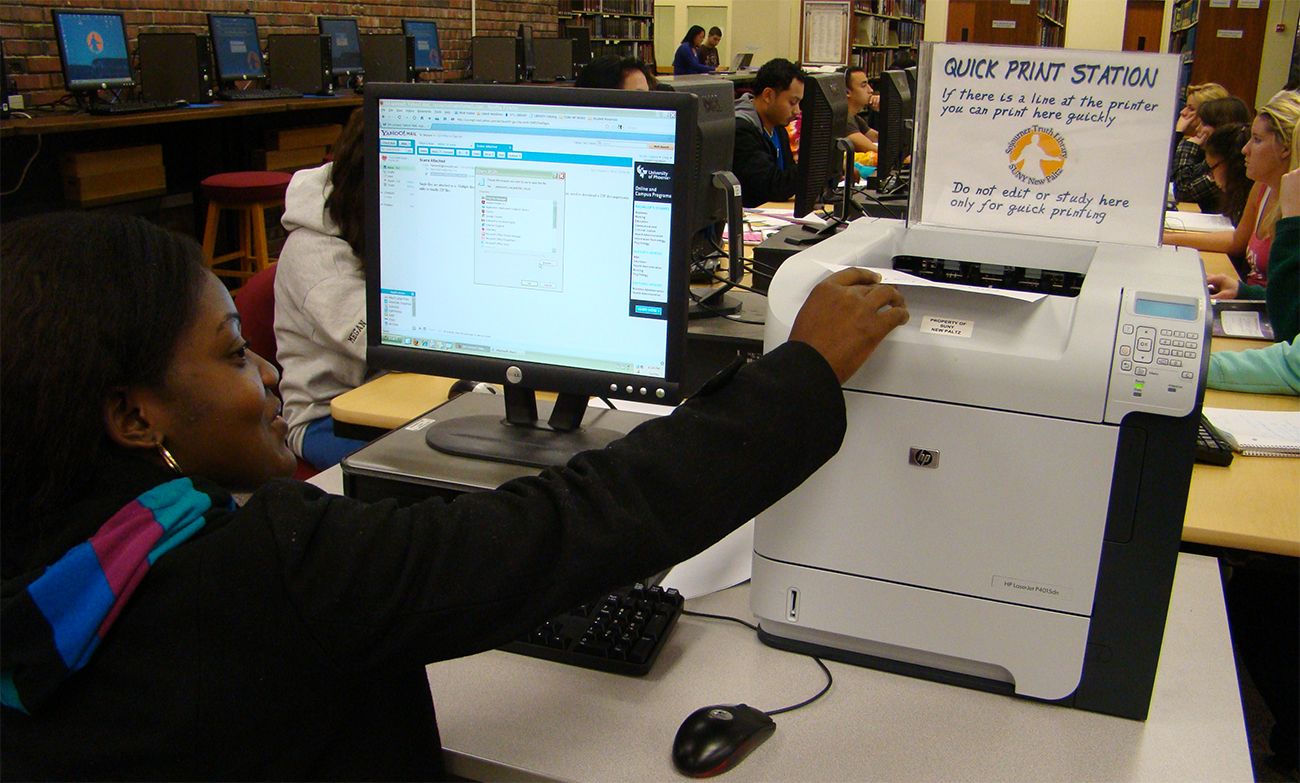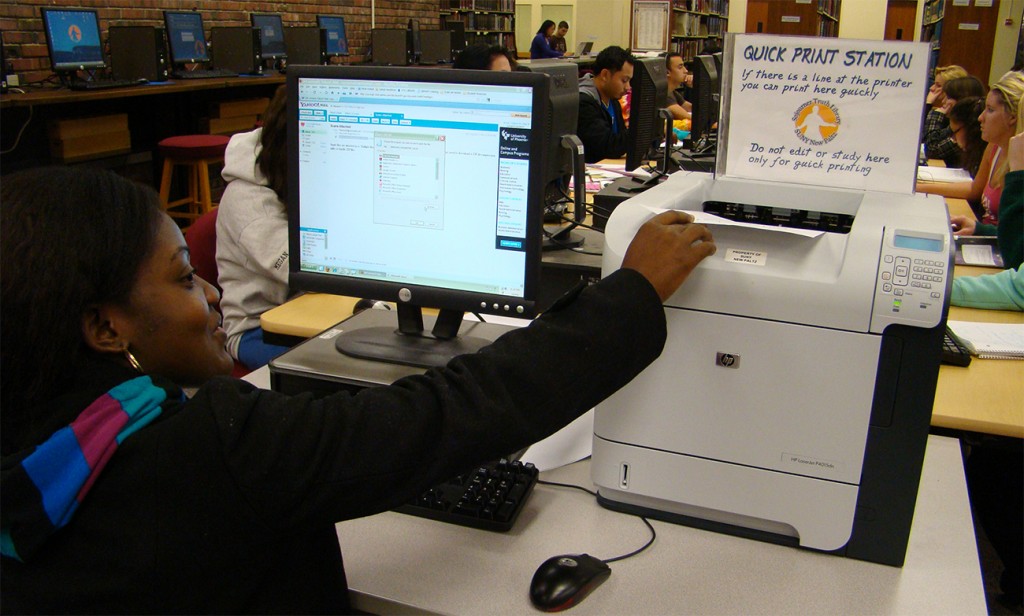

A familiar prompt will be gracing the screens of computers in campus computer labs this semester as SUNY New Paltz looks to reinstate the print quota.
A 33 percent jump in paper usage occurred last semester after the print quota was suspended while SUNY New Paltz took time to track down problems with the printers.
“The print quota is being reinstated in an attempt to control costs and waste,” said Jon Lewit, assistant vice president of technology. “The cost of supporting printing has increased over the years, and with the removal of the quota system, usage has dramatically increased.”
To combat the rise in usage, the quota will be reintroduced. Before the suspension, students had a print quota of 400 pages with additional pages available if they asked.
“After [students] ran through [the initial print quota of 400 pages], they could request an additional 100 pages. From there, the increments continued to decrease,” said Lewit. “This was our attempt at implementing a ‘think before you print’ attitude toward using up paper and toner.”
A new system is scheduled to take its place that will give students an initial print quota and additional pages at a price.
But, Lewit said although quotas will be reintroduced, it is likely that a system to charge for additional pages over the initial quota will not be available this semester.
“I print a lot so I don’t like it,” said fifth-year chemistry major Michael Wengen. “But I understand why they would do it. I’m sure that a lot of paper is getting wasted because people print stuff and just leave it there.”
SUNY New Paltz has made efforts to fix the initial operating system problems that led to suspension of the print quota in the first place, but the repairs have taken some time as the original quota programs were not compatible.
“To address the original problem, we upgraded some of the underlying operating system software that runs the academic servers. Following that, the then current version of the print quota software failed to work,” said Lewit. “It has taken an extended period of time to re-institute a working version of the software, largely because we have had to upgrade all of the printer related background infrastructure, and there have been delays in the vendor making an updated version of the quota software available.”
The move to reinstate the quota seems to not only to be one with immediate monetary repercussions for the administration but environmentally minded students also see a green side to the issue.
“I have seen a lot of abandoned printed pages littering the computer labs and in the library,” said Mary O’Leary, a fifth-year visual arts major. “I think it’s a good thing. It will make people think twice before printing.”
The new print quota standard does not have a definite date for implementation but students can expect it to come into effect this semester.
“We are hoping to have the new system in place the end of October or the beginning of November. We really need to re-institute a quota system as printer utilization has been through the roof this semester…,” said Lewit. “Only a relatively small percentage of the population uses up their quota and we need to both control use and recoup some of the expenses we incur when people print a large number of pages beyond their quota.”
